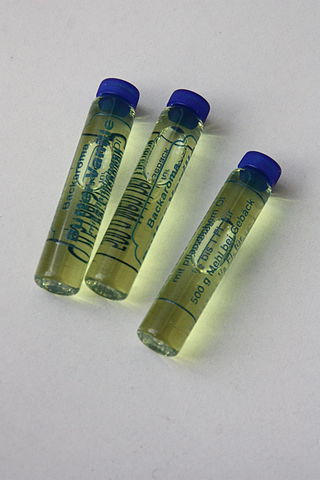
Heroin, also known as diacetylmorphine and diamorphine among other names, is a morphinan opioid substance derived from the dried latex of the Papaver somniferum plant and is mainly used as a recreational drug for its euphoric effects. Medical grade diamorphine is used as a pure hydrochloride salt. Various white and brown powders sold illegally around the world as heroin are routinely diluted with cutting agents. Black tar heroin is a variable admixture of morphine derivatives—predominantly 6-MAM (6-monoacetylmorphine), which is the result of crude acetylation during clandestine production of street heroin. Heroin is used medically in several countries to relieve pain, such as during childbirth or a heart attack, as well as in opioid replacement therapy.

Morphine is a strong opiate that is found naturally in opium, a dark brown resin in poppies. It is mainly used as a pain medication, and is also commonly used recreationally, or to make other illicit opioids. There are numerous methods used to administer morphine: oral; sublingual; via inhalation; injection into a muscle; by injection under the skin; intravenously; injection into the space around the spinal cord; transdermal; or via rectal suppository. It acts directly on the central nervous system (CNS) to induce analgesia and alter perception and emotional response to pain. Physical and psychological dependence and tolerance may develop with repeated administration. It can be taken for both acute pain and chronic pain and is frequently used for pain from myocardial infarction, kidney stones, and during labor. Its maximum effect is reached after about 20 minutes when administered intravenously and 60 minutes when administered by mouth, while the duration of its effect is 3–7 hours. Long-acting formulations of morphine are available as MS-Contin, Kadian, and other brand names as well as generically.

Diacetyl ( dy-yuh-SEE-tuhl) (IUPAC systematic name: butanedione or butane-2,3-dione) is an organic compound with the chemical formula (CH3CO)2. It is a yellow liquid with an intensely buttery flavor. It is a vicinal diketone (two C=O groups, side-by-side). Diacetyl occurs naturally in alcoholic beverages and is added as a flavoring to some foods to impart its buttery flavor.

In organic chemistry, a dicarbonyl is a molecule containing two carbonyl groups. Although this term could refer to any organic compound containing two carbonyl groups, it is used more specifically to describe molecules in which both carbonyls are in close enough proximity that their reactivity is changed, such as 1,2-, 1,3-, and 1,4-dicarbonyls. Their properties often differ from those of monocarbonyls, and so they are usually considered functional groups of their own. These compounds can have symmetrical or unsymmetrical substituents on each carbonyl, and may also be functionally symmetrical or unsymmetrical.

Malolactic conversion is a process in winemaking in which tart-tasting malic acid, naturally present in grape must, is converted to softer-tasting lactic acid. Malolactic fermentation is most often performed as a secondary fermentation shortly after the end of the primary fermentation, but can sometimes run concurrently with it. The process is standard for most red wine production and common for some white grape varieties such as Chardonnay, where it can impart a "buttery" flavor from diacetyl, a byproduct of the reaction.

Acetoin, also known as 3-hydroxybutanone or acetyl methyl carbinol, is an organic compound with the formula CH3CH(OH)C(O)CH3. It is a colorless liquid with a pleasant, buttery odor. It is chiral. The form produced by bacteria is (R)-acetoin.
An opioid antagonist, or opioid receptor antagonist, is a receptor antagonist that acts on one or more of the opioid receptors.
The molecular formula C4H6O2 may refer to:

Nalorphine (INN), also known as N-allylnormorphine, is a mixed opioid agonist–antagonist with opioid antagonist and analgesic properties. It was introduced in 1954 and was used as an antidote to reverse opioid overdose and in a challenge test to determine opioid dependence.
The Weaver Popcorn Company, based in Van Buren, Indiana, is one of the largest popcorn companies in the United States.

Alazocine, also known more commonly as N-allylnormetazocine (NANM), is a synthetic opioid analgesic of the benzomorphan family related to metazocine, which was never marketed. In addition to its opioid activity, the drug is a sigma receptor agonist, and has been used widely in scientific research in studies of this receptor. Alazocine is described as a potent analgesic, psychotomimetic or hallucinogen, and opioid antagonist. Moreover, one of its enantiomers was the first compound that was found to selectively label the σ1 receptor, and led to the discovery and characterization of the receptor.

A-86929 is a synthetic compound that acts as a selective dopamine receptor D1 agonist. It was developed as a possible treatment for Parkinson's disease, as well as for other applications such as treatment of cocaine addiction, but while it had reasonable efficacy in humans it also caused dyskinesias and has not been continued. It has mainly been used as its diacetate ester prodrug adrogolide (ABT-431), which has better bioavailability.

Diacetyl peroxide is the organic peroxide with the formula (CH3CO2)2. It is a white solid or oily liquid with a sharp odor. As with a number of organic peroxides, it is explosive. It is often used as a solution, e.g., in dimethyl phthalate.

Nalorphine dinicotinate, also known as N-allylnormorphine dinicotinate, dinicotinoylnalorphine, or niconalorphine, is a semisynthetic, mixed opioid agonist-antagonist which is described as a narcotic antagonist but may produce limited analgesia and sedation at higher doses in opioid naive patients. It is the 3,6-dinicotinate ester of nalorphine, and is therefore the nalorphine analogue of nicomorphine.

Artificial butter flavoring is a flavoring used to give a food the taste and smell of butter. It may contain diacetyl, acetylpropionyl, or acetoin, three natural compounds in butter that contribute to its characteristic taste and smell. Manufacturers of margarines or similar oil-based products typically add it to make the final product butter-flavored, because it would otherwise be relatively tasteless.

Nalodeine, also known more commonly as N-allylnorcodeine, is an opioid antagonist that was never marketed but is notable as the first opioid antagonist to be discovered. It was first reported in 1915 and was found to block the effects of morphine in animals. This was followed by the clinical introduction of nalorphine (N-allylnormorphine) in 1954, naloxone (N-allyloxymorphone) in 1960, and naltrexone (N-methylcyclopropyloxymorphone) in 1963. Nalmefene (6-desoxy-6-methylene-naltrexone), another structurally related opioid antagonist derivative, was also subsequently introduced, in 1996. In animals, nalodeine both reverses morphine- and heroin-induced respiratory depression and acts as a respiratory stimulant in its own right. Similarly to nalorphine, nalodeine has also been found to act as an agonist of the κ-opioid receptor.

2,3,4-Pentanetrione (or IUPAC name pentane-2,3,4-trione, triketopentane or dimethyl triketone) is the simplest linear triketone, a ketone with three C=O groups. It is an organic molecule with formula CH3COCOCOCH3.

Diacetyl monoxime is a chemical compound described by the formula CH3C(O)C(NOH)CH3. This colourless solid is the monooxime derivative of the diketone butane-2,3-dione (also known as diacetyl and biacetyl). Its biological effects include inhibiting certain ATPases.

Tetraacetyl diborate is an organoboron compound with the molecular formula (CH3COO)2BOB(CH3COO)2.
















